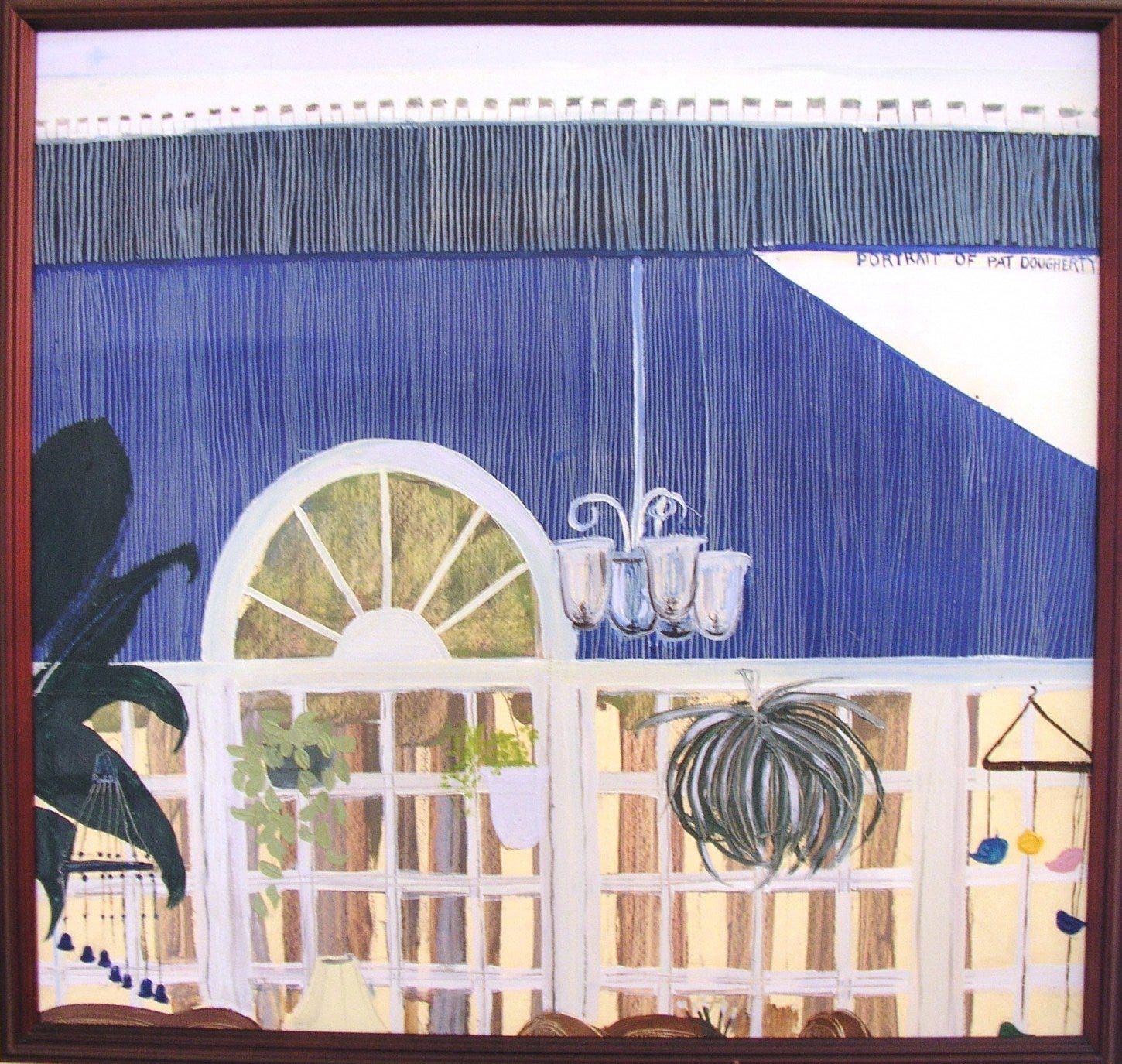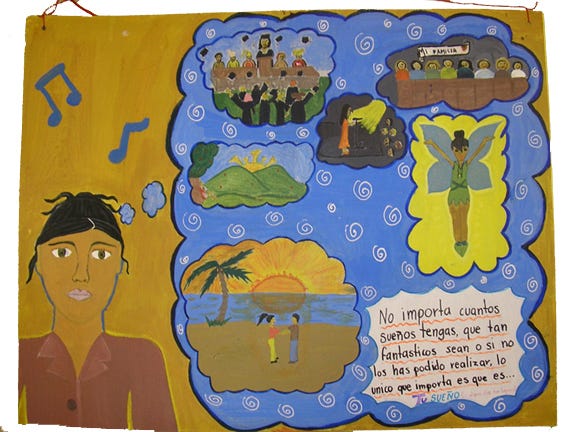The Folk are Fine
and other things art school doesn't teach
It was 2001, and I was preparing to leave the nest. I’d taken to public schooling and punk subculture with equal voracity; one fulfilled my mind’s interest in intellectually stimulating pattern recognition and the other gifted me expression to critique the sexist, homophobic, racist, classist, and consumption-driven suburban culture surrounding my childhood in colonial Virginia (yes, colonial is a descriptor they still use to glorify the aesthetics of settler creation stories).
My mom cultivated a nest for us at home. She is a sanctuary artist; combining color, pattern, plants, and form to delight our senses. Here, Bolivian ephemera and conversational Spanish warmed an environment for relaxation and joy in a neighborhood where home colors couldn’t exceed a beige palette and unruly yards beget fines. A culture of suppression and shame caused depression, violence, and anxiety to fester behind the identical doors. Nuclear families, individualism, and mythologies of supremacy bred the culture of small-minded conservatism tearing communities apart today. Between culture and subculture, I arrived to college with a mistrust of authority that would shape my educational and artist paths to come.
I tentatively stepped into my University’s art department, trying out classes that could meet my curiosity and creativity. I found the 101’s draining; so much theoretical banter and so little inspiration. The meaning had to be unpacked in artist statements; the symbolism hammered out in critique. The world is rife with inspiration and meaning; why did the conceptual art we had to study feel so dry? Why, furthermore, was there an inherent belief that the Western academic canon represented the finest of Art-making when the folk art I grew up surrounded with made my spirit feel something?
The aversion was so strong that I couldn’t comply with assignment to make paintings representing ideas filtered through theory, then pigment. Instead, I kept painting the interesting things I saw: my feet, my bedroom, our neighbor’s yard. I saw these as artifacts of life moving outside of rational thought and they fascinated me. I wanted to study the lexicon of image and bliss in my ethno-visual field.
I gravitated to the Latin American studies department, instead. There I read Pedagogy of the Oppressed, where Paolo Friere made the apparently radical assertion that human beings come into the classroom with knowledge. And that education is about sharing tools so people can better express their positions, articulate their dreams, and defend their sovereignty.
There we immersed in subaltern theories that flipped the map; South America and Africa were on top, the Global North could be placed below. Philosophy from hybrid academics, like me, legitimized their community’s knowledge. I applied critical pedagogy to art education to create Los Artistas; a Spanish-language art program for the children of recent guatemayan and mexica immigrants to North Carolina. We used art practices to study, uplift, learn from their families making their way in foreign culture. Patterns on dishware, doodles in journals, decorations in living rooms; life’s bricolage imprinted artworks with a living aesthetic so captivating to guests at their exhibitions.
Fastforward to 2010 in graduate school at UCLA, where I attended art school because I could work on the body of work inspiring me instead of conceptual assignments. I had a professor proclaim that he knew what I was doing, that I was copying Grandma Moses’ work. I’d never heard of her, but after looking her up, I wasn’t sure why her style would be a pejorative. The folk versus fine art binary is fake. It’s supremacist. It’s valuing academic art over everyday art.
Creation is everywhere. This planet is the most beautiful work of art. There are collaborations between the elements, with animals, with plant communities, with human communities. There’s art everywhere we look, and often the most interesting (to me) is the art that reflects unique cultural locations. Contrast, complexity, story, and sites of memory unfurl experiences that haven’t been expressed before. The novelty is the brilliance. The multi-coded consciousness already lives in everything we do. We don’t have to explain it; we feel it through the material, intention, and expression.




Yes!!!